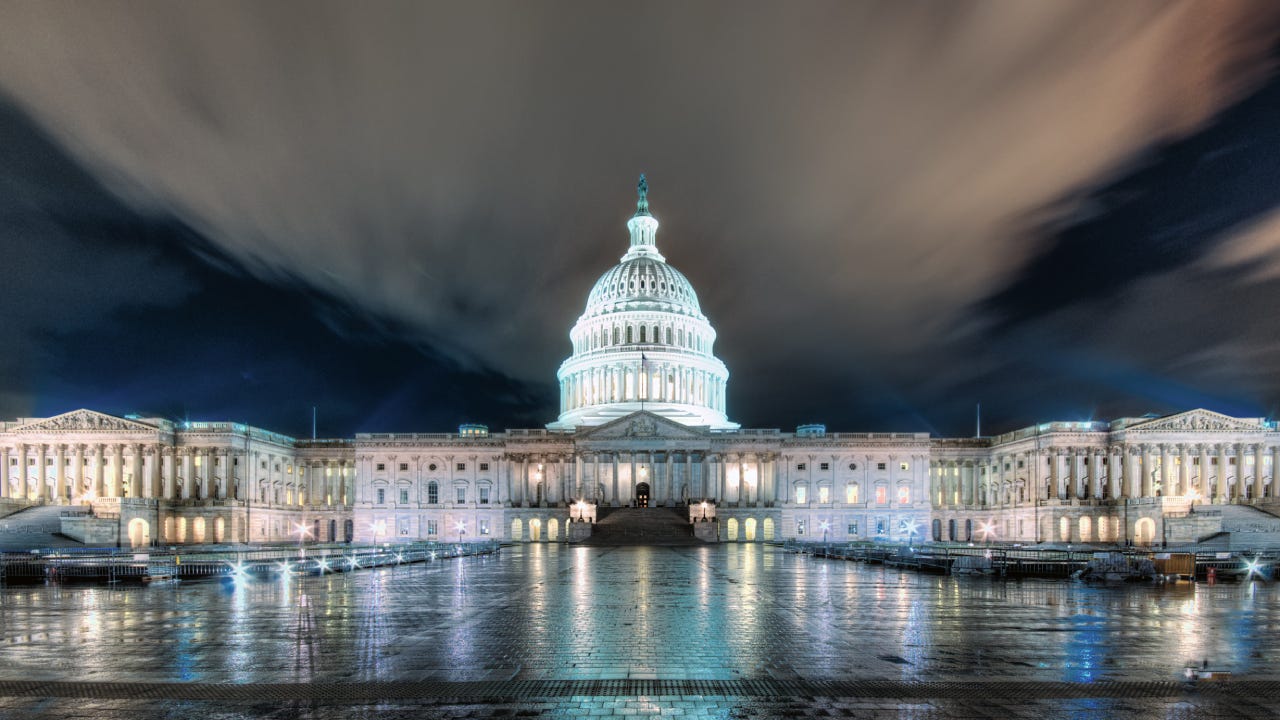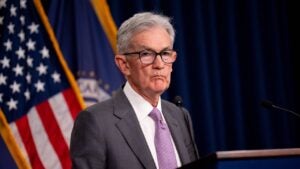Election 2024: How stocks perform in election years

As the presidential election approaches, investors are turning their attention to the stock market to understand how political shifts might impact their portfolios. By examining past performance, investors can better prepare for the uncertainties and volatility election years bring.
While past performance is no indicator of future results, here’s a look at how the S&P 500 index has performed during past presidential elections.
How did the S&P 500 perform during presidential election years?
From 1928 to 2016, the average return for the S&P 500 index during presidential election years was 11.3 percent, according to an analysis from Morgan Stanley with data from Morningstar and Ibbotson Associates.
When a Republican was elected to office, the average annual S&P 500 return for the year was 15.3 percent, the study found. When a Democrat was elected, the average yearly return for the S&P 500 was 7.6 percent. The best presidential election year for the stock market was 1928 at 43.6 percent, and the worst year was 2008 at -37 percent.
A more limited 2024 analysis by T. Rowe Price produced similar overall results, calculating an average S&P 500 return of 11 percent for the 24 presidential election years taking place between 1928 and 2023.
That might sound impressive, but the study goes on to point out that the return during non-election years is slightly higher, at 11.6 percent.
Out of the 23 election years taking place from 1928 to 2016, 83 percent saw a positive S&P 500 performance, the Morgan Stanley report found. That left four years (1932, 1940, 2000 and 2008) in negative territory.
It’s worth noting that years with negative outcomes coincided with significant economic events, which had a bigger impact on the stock market than the elections themselves. For example, The Great Depression in 1932, the start of World War II in 1940, the dot com bubble bust in 2000 and the housing market crash in 2008.
What is the presidential election cycle theory?
To better understand the potential impact of elections on the stock market, it can be helpful to take a step back and look at trends across an entire four-year presidential cycle, instead of focusing solely on election years.
The presidential election cycle theory, first introduced by Yale Hirsch in the “Stock Trader’s Almanac,” suggests that U.S. stock markets tend to follow a predictable pattern based on the four-year presidential election cycle.
According to this theory:
- Year 1 (post-election year): Markets often experience a dip as the new president implements policies and reforms. Investors are cautious due to uncertainty about the new administration’s economic agenda.
- Year 2 (midterm election year): Market volatility typically increases. Historically, this year has been the weakest in the cycle as midterm elections create political uncertainty and potential legislative gridlock.
- Year 3 (pre-election year): This year is usually the strongest for the stock market. Presidents often push for policies that stimulate the economy and improve market performance to boost their re-election chances or their party’s prospects.
- Year 4 (election year): Market performance can vary. During this time, investors react to the election campaigns, candidates’ platforms and potential changes in economic policy.
The 2024 analysis by T. Rowe Price found some evidence to back up elements of presidential election cycle theory. It found that stock market returns six and 12 months after Election Day were meaningfully lower than in corresponding periods for years without a presidential election. This tracks with Hirsch’s theory that during a post-election year, markets often experience a dip as the new president implements policies and reforms.
Other market trends during election years
Elections can influence both stock returns and investor behavior. A 2024 study by Capital Group analyzed 90 years of historical stock market returns, and identified three other trends.
- Markets trend higher, regardless of which party takes the presidency: Which party holds power hasn’t significantly impacted stock market performance. Since 1933, the overall market trend has been upward through eight Democrat and eight Republican presidents. For investors, maintaining a long-term investment strategy is more crucial than the results of an election.
- Parties tend to get re-elected when the S&P 500 is up: How well the stock market is performing right before Election Day has accurately predicted the winner in 20 of the last 24 presidential elections since 1936, according to Capital Group. When the S&P 500 Index rises in the three months leading up to a presidential election, the incumbent party tends to win. But if the S&P is down during the same period, the incumbent party tends to lose.
- Staying invested and making regular contributions boosts returns: The study found that investors who remained fully invested or made monthly contributions during election years consistently outperformed those who stayed out of the market. The findings suggest that maintaining an active investment strategy, rather than staying on the sidelines, leads to higher average portfolio balances, especially over longer time frames.
5 tips for investors during election years
As presidential elections approach, it’s natural to be wary of stock market volatility and how stocks will react. But as any veteran trader knows, keeping emotions out of investing is paramount if you want to build long-term wealth.
Regardless of the outcome and who gets elected, here are five steps you can take to prepare and safeguard your finances.
- Practice diversification: Market fluctuations are inevitable, but a diversified portfolio can act as a shield. By investing across different asset classes and industries, you minimize the impact of a downturn in any single area. Low-cost index funds are a simple way to achieve this diversification.
- Invest consistently with dollar-cost averaging: Forget trying to time the market around the election. Dollar-cost averaging lets you invest a fixed amount at regular intervals, like clockwork. This strategy helps you buy more shares when prices are low and fewer when they’re high, potentially lowering your overall investment cost.
- Think long term, stay calm: The market can be a rollercoaster — especially in the months leading up to Election Day — but don’t let short-term dips cloud your judgment. Remember, you’re investing for the future and these fluctuations are temporary. Stay focused on your long-term goals and avoid impulsive decisions.
- Prepare for emergencies with a high-yield savings account: An emergency fund is your financial safety net. Set aside cash in a readily accessible account like a high-yield savings account or cash management account to cover unexpected expenses. This ensures you don’t have to tap into your investments when faced with emergencies.
- Seek professional guidance when you need it: If you’re unsure about your portfolio’s diversification or asset allocation, consider speaking with a financial advisor. They can assess your financial situation and goals and recommend personalized strategies to optimize your portfolio.
Bottom line
While the S&P 500 has generally been positive during presidential election years, these gains are not guaranteed and trying to price-in and predict the November winner is a risky move. The market’s performance can be heavily influenced by broader economic events and investor sentiment. Instead, maintain a diversified, long-term strategy to navigate the uncertainties of election years and position yourself for success, regardless of who wins the presidency.
You may also like

How to start investing in 2025





